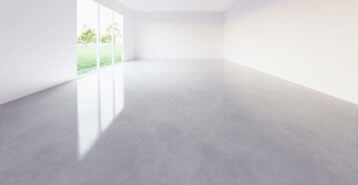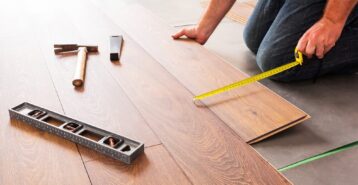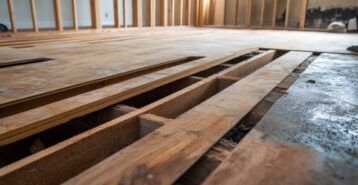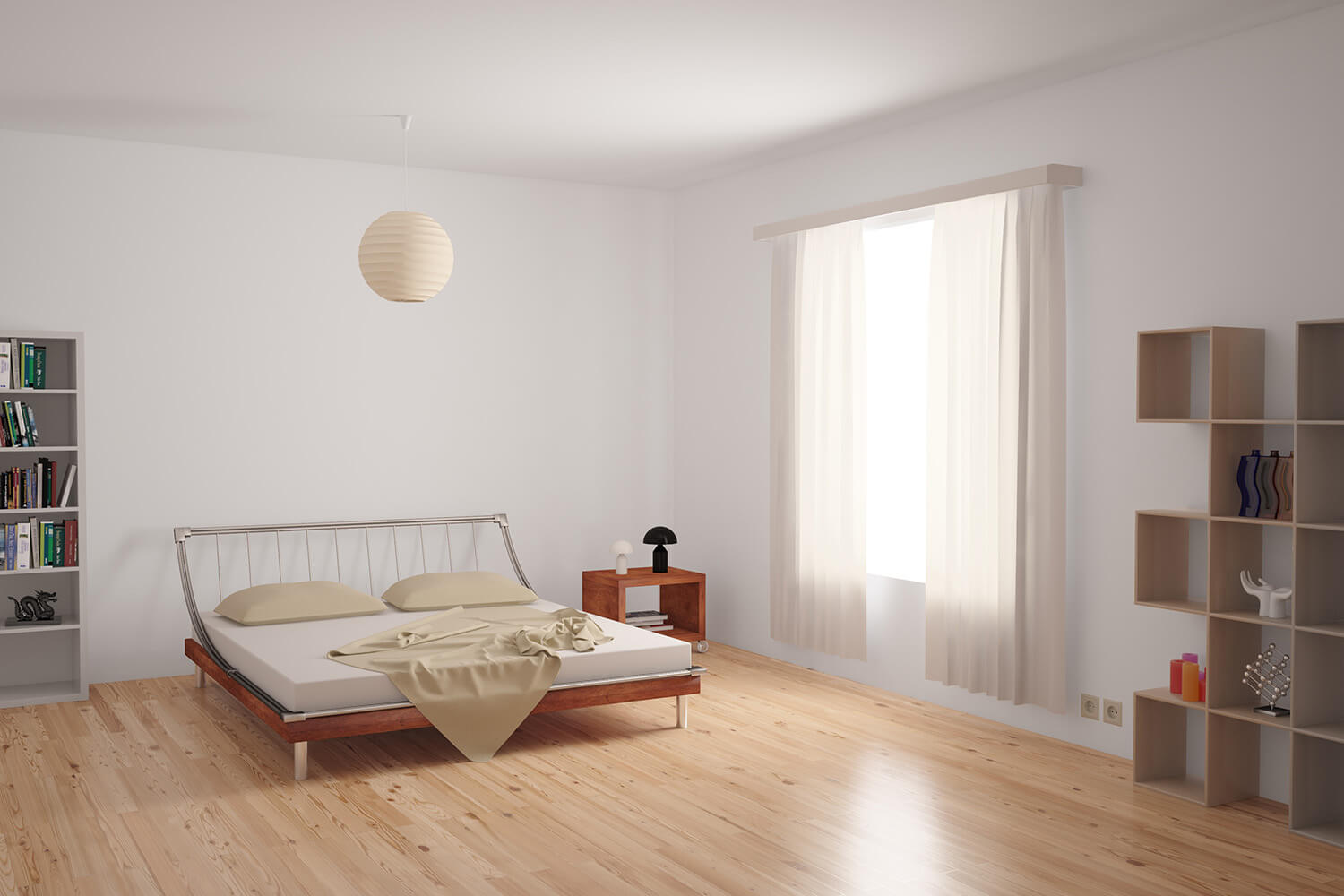There are many different types of flooring that homeowners can choose from during renovations and installations, from hardwood to carpet to versatile options like laminate. The best type of flooring for your home will depend on your lifestyle, budget, style preferences, and the specific needs of each room.
Which Flooring is Most Popular?
In a September 2023 survey of thousands of homeowners planning to replace their floors in the next 12 months, here are the top three types respondents indicated they would be installing:
- Laminate (16.5%)
- Tile (15%)
- Hardwood (15%)
You can check out all the survey data for the most popular flooring at our survey hub.
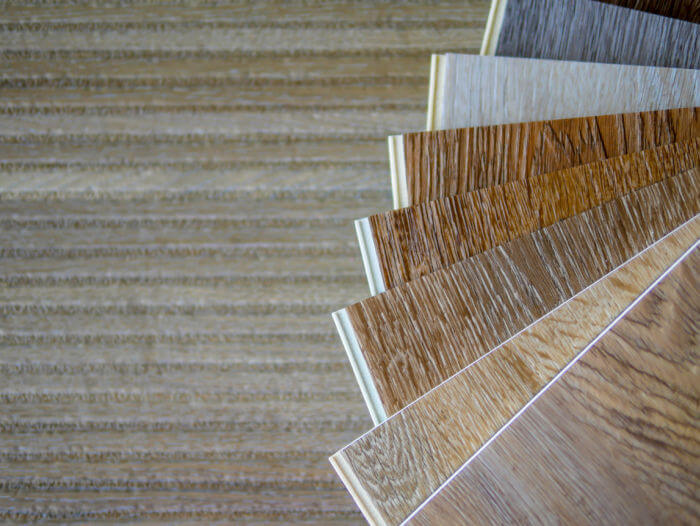
Keep in mind that there are countless style options within each flooring category. When you begin your flooring project, your contractor can help you decide on which flooring type and style is best for your home or particular room.
Let’s break down several main flooring types individually to help you gain a better understanding of their pros and cons, and how each may fit into your flooring renovation plans.
What Are the Best Types of Flooring?
The best flooring for you is going to depend on where the floors are going, if your home has kids or pets, and if your flooring needs to be waterproof. If you are concerned about slips and falls, you will want to prioritize non-slip floors like carpet. If you have pets that shed, you may instead want a material that is easy to sweep or vacuum, like vinyl floors. Here’s when to choose different types of floors.
Let’s explore the eight most popular flooring options.
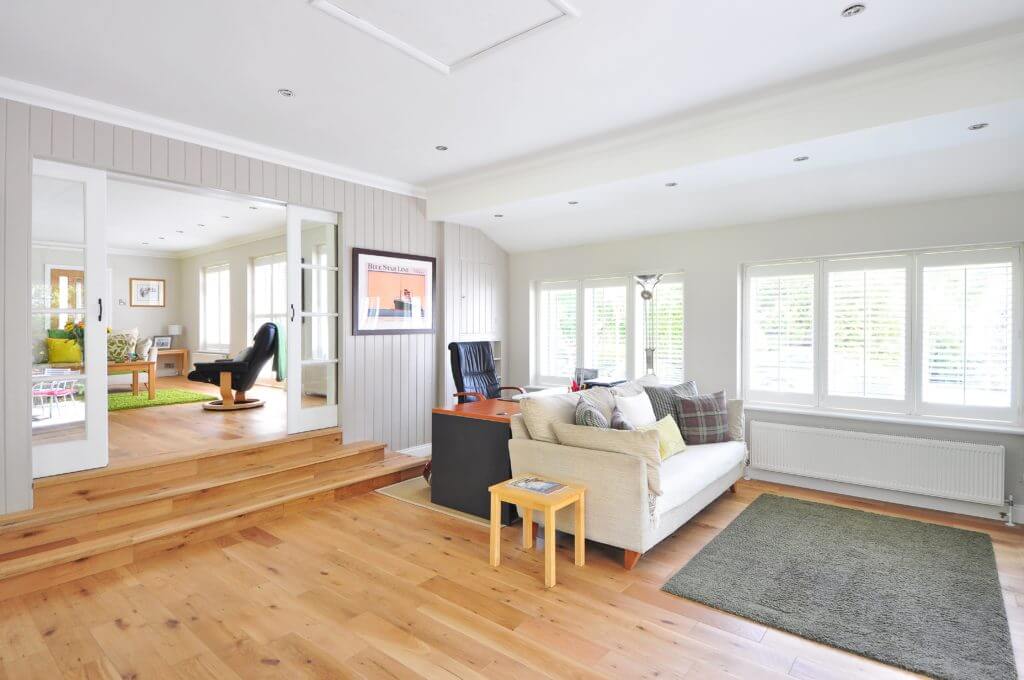
Carpet
Most homes have carpet flooring installed in at least a few rooms. The Carpet and Rug Institute says carpet’s main benefits are its beauty, style, improved air quality, warmth, comfort and noise reduction.
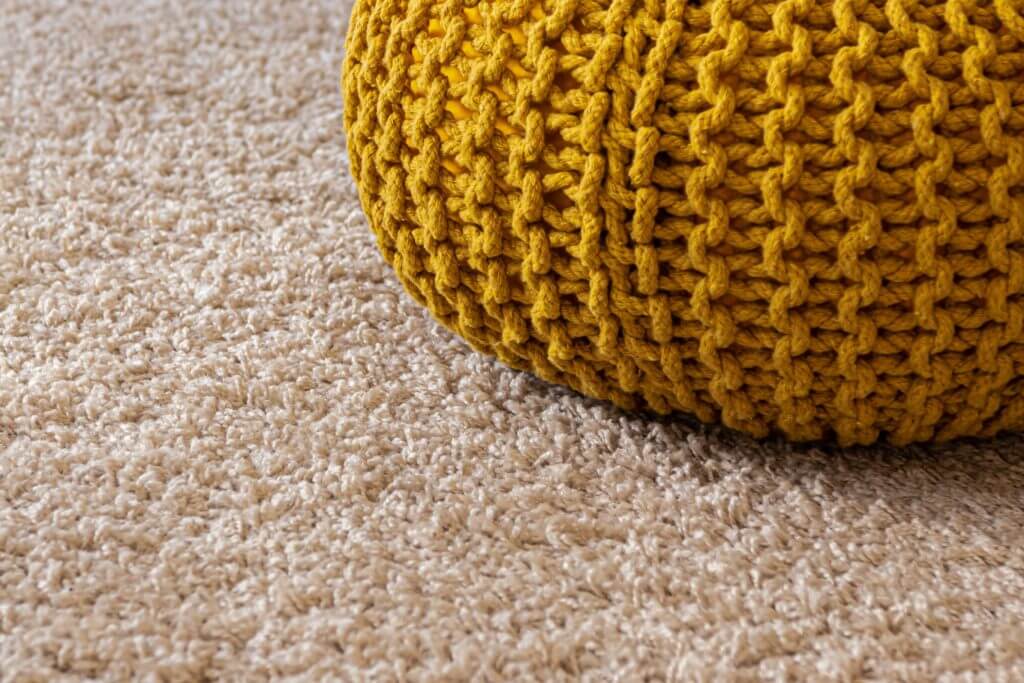
Ideal for: Bedrooms, Living Rooms, and Playrooms
Why Choose It: Carpet provides a warm, comfortable, and cozy feel underfoot. It’s a great option for areas where you want some insulation and noise reduction, especially in bedrooms. Carpet comes in various colors and styles, making it adaptable to different design preferences.
Disadvantages: On the downside, carpet can show wear after a few years of hard use, and is known to trap and hold troublesome allergens such as dust and dander. Carpet also requires routine maintenance such as vacuuming and the occasional shampooing. It also can be stained by spills or pet mishaps.
Hardwood
Hardwood flooring comes in a wide variety of timeless styles and materials. It’s durable, and it needs little day-to-day maintenance.
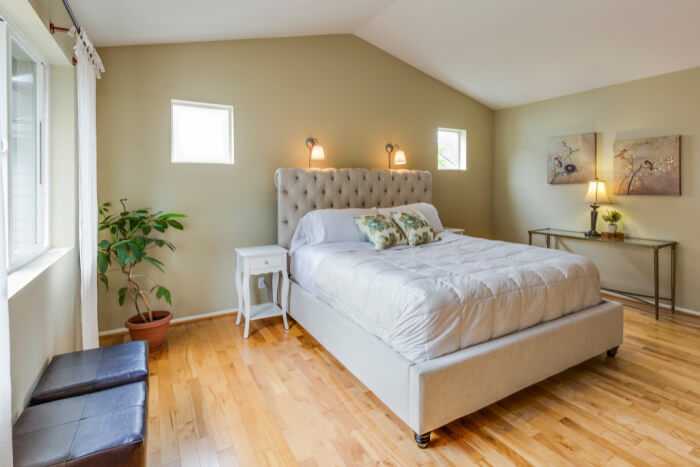
Ideal for: Living Rooms, Dining Rooms, Hallways
Why Choose It: Hardwood flooring is known for its timeless beauty and durability. Suitable for high-traffic areas, it adds value to the home and can be refinished over time. It offers a natural and elegant appearance but may require more maintenance compared to other flooring types.
You can read more about the types of hardwood you can choose from.
Disadvantages: Disadvantages of hardwood include a rather hefty price tag for materials and installation. It is also prone to dents, scratches, and other forms of wear and tear over time.
Tile
Tile flooring is a durable and low-maintenance flooring option, though it has one of the higher material prices.
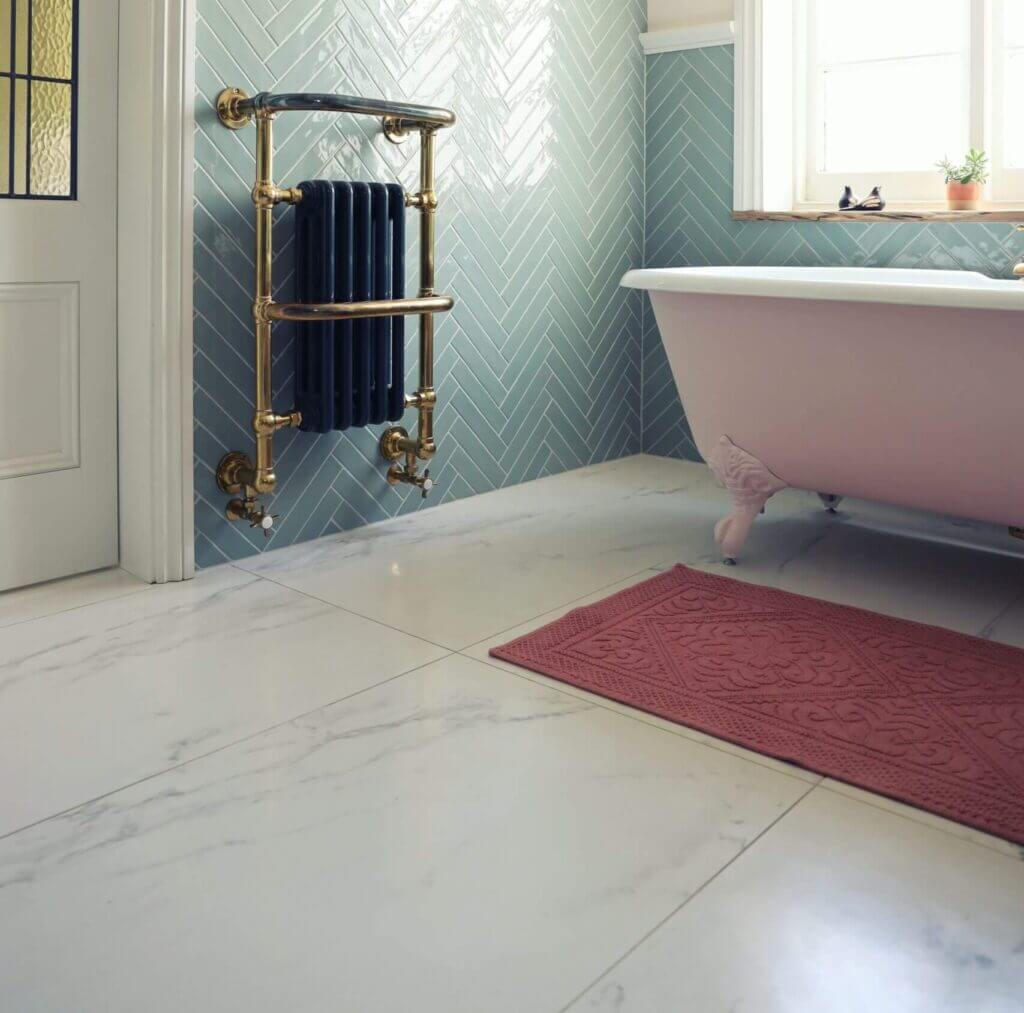
Ideal for: Kitchens, Bathrooms, Entryways
Why Choose It: Tile flooring is a versatile option, resistant to water and stains. It’s perfect for areas that are prone to spills or moisture, like bathrooms and kitchens. Tiles come in various materials like ceramic, porcelain, or stone, offering a broad range of styles and colors. The most popular and cost-effective types of tile from that list are porcelain and ceramic.
Disadvantages: Potential drawbacks include a significantly higher price for materials and installation than other flooring solutions. Tile also can feel quite chilly underfoot in colder climates. Some homeowners also choose to routinely seal their tile and grout lines to help protect it.
Laminate
Laminate flooring is a popular solution because it provides durability, style and low maintenance.
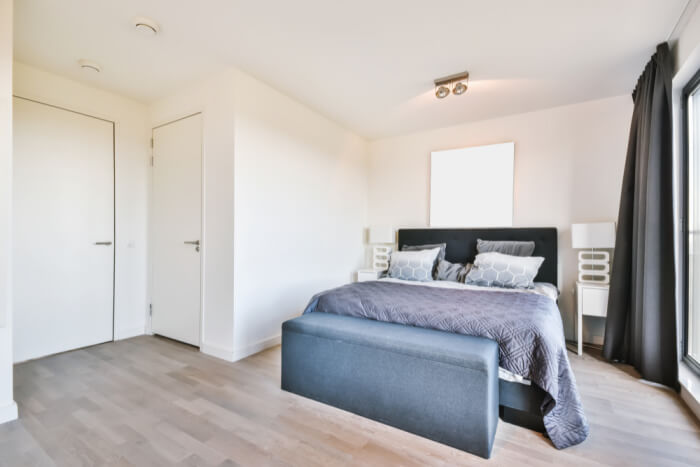
Ideal for: Living Areas, Bedrooms, Budget Renovations
Why Choose It: Laminate flooring is a cost-effective choice, simulating the look of hardwood or stone without the high price tag. It’s relatively easy to install and maintain, making it an appealing choice for those wanting a stylish look without breaking the bank.
Disadvantages: Laminate cannot be sanded and refinished like regular hardwood. Scratches, dents and the like can be difficult to repair.
Vinyl
Engineered vinyl flooring can visually mirror more expensive flooring options like wood, marble, or tile, but at a much lower price.

Ideal for: Bathrooms, Kitchens, Laundry Rooms
Why Choose It: Vinyl is an affordable, water-resistant option, suitable for areas where durability is required. With an array of patterns and colors (including some that mimic the look of other types of flooring), it’s an attractive choice for those looking for a low-maintenance and versatile flooring solution. These durable, waterproof planks are perfect for high-traffic areas since they do not easily scratch or stain and are easily cleaned.
Disadvantages: Vinyl floors can be prone to scratches and dents, which can diminish their appearance over time. Additionally, lower-quality vinyl can emit volatile organic compounds (VOCs), and the material is not biodegradable, raising environmental concerns. Some homeowners might also find that vinyl doesn’t provide the same luxurious feel or authentic appearance as natural materials like hardwood or stone.
Linoleum
Linoleum flooring is an inexpensive option sold in sheets or tiles that fit snugly together and are then glued down with a spread adhesive.
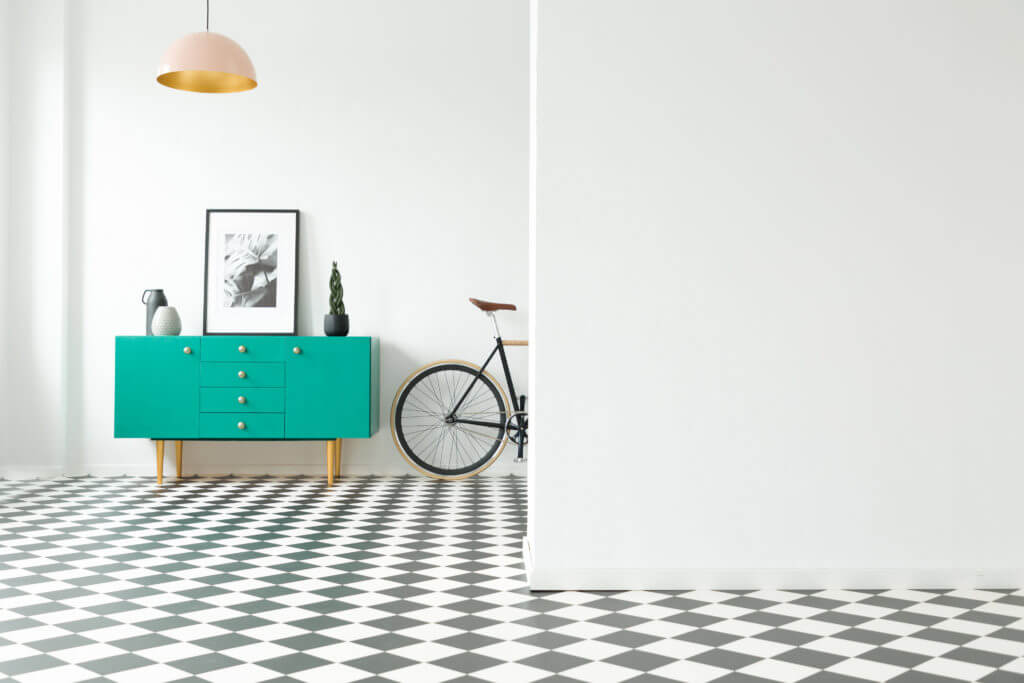
Ideal for: Kitchens, Playrooms, Commercial Spaces
Why Choose It: Linoleum is an eco-friendly flooring option, made from natural materials. It’s resilient, easy to clean, and available in various colors and patterns. Its antistatic properties make it a popular choice in commercial areas and playrooms.
Disadvantages: A few drawbacks include the fact that linoleum can be dented from drop impacts, it can fade in direct sunlight, and it often does not offer the same visual appeal as other flooring options.
Bamboo
Bamboo flooring is a unique, cost-effective option for homeowners who like the look of hardwood.
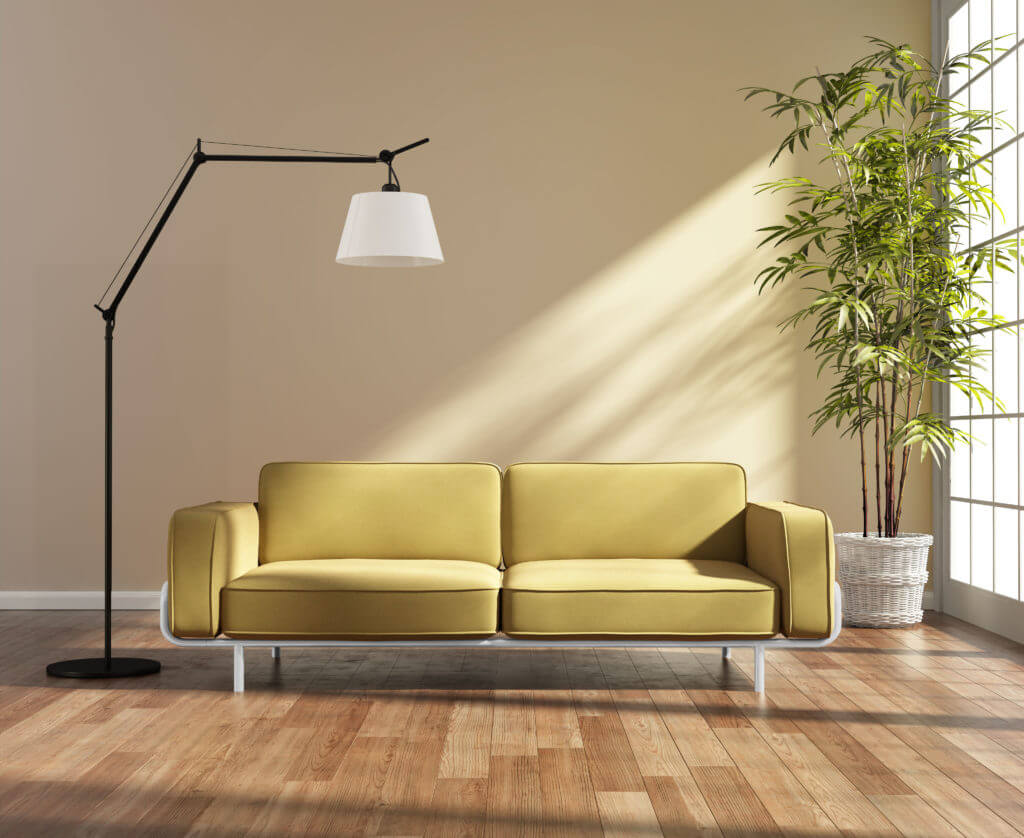
Ideal for: Living Rooms, Dining Rooms, Eco-friendly Homes
Why Choose It: Bamboo flooring is a sustainable and renewable resource, appealing to environmentally conscious homeowners. It’s durable, stylish, and often considered a greener alternative to traditional hardwood flooring.
Disadvantages: Bamboo flooring, although a renewable resource, can be inconsistent in quality, depending on the manufacturer and the age of the bamboo used. It can be susceptible to moisture damage and may warp or become discolored if exposed to prolonged humidity.
Cork
Cork floors are an eco-friendly, sustainable material that allows for added comfort and cushioning underfoot.
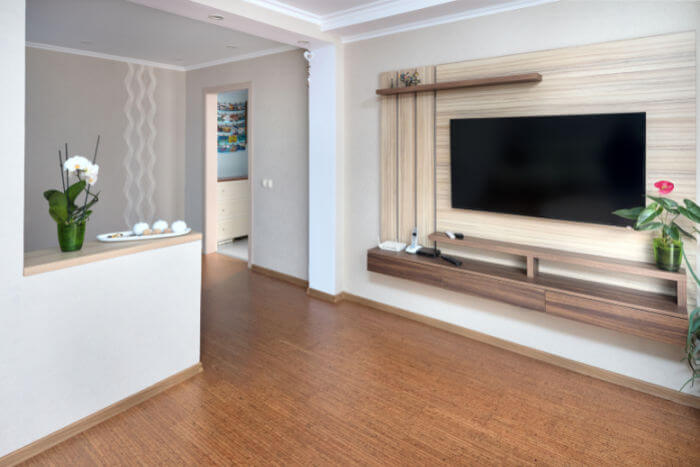
Ideal for: Bedrooms, Home Offices, Libraries
Why Choose It: Cork is a soft, cushion-like flooring that provides comfort underfoot and sound insulation. It’s an excellent choice for spaces where you’d like a quieter, warmer ambiance. Being a renewable resource, cork is also an eco-friendly option. This flooring type is also resistant to mold, mildew, termites and fire.
Disadvantages: Cork flooring is known for its soft, cushion-like feel, but this can also make it more prone to dents and scratches, especially from heavy furniture or high heels. It may also fade if exposed to direct sunlight over an extended period. Although it’s resistant to moisture to some extent, excessive water exposure can lead to swelling or warping, requiring more careful maintenance in areas prone to spills or dampness.
6 Factors to Consider When Choosing New Floors
Now that we have covered common types of flooring, let’s dive into some of the most common considerations when choosing new flooring. Primary concerns include cost, style and durability. However, other factors you should consider when choosing new flooring include its location and daily usage, maintenance and potential return on your investment.
Here’s a closer look at each factor:
1. Cost
The cost of each type of flooring is perhaps the most important factor for the majority of homeowners. Some flooring options are more expensive, like hardwood, while others are more economical, like laminate or vinyl. You can learn about flooring costs by type and style to find the options that are in your budget.
2. Style
Certain types of flooring will match your home’s décor and personal taste better than others. Also, when styling new floors, it is important to consider the room’s use and activity level: is it a high-traffic area, or a part of the home that’s a bit quieter? Is it a common gathering place? Will it need frequent cleaning due to kids playing or from spills while cooking dinner?
For instance, according to Living Spaces interior designer Shelby Greene:
“Rugs, and rug-pile height, or the length of a rug’s fibers, can make a dramatic difference in the look and feel of a home, especially with brand new floors. High-pile rugs, like shag, bring coziness, while low-pile rugs that sit close to the floor are best for high-traffic areas and bring in color while being easy to clean.”
Consider consulting with a design professional to help you make flooring choices that you’ll be happy with today as well as years later.
3. Maintenance
Some types of flooring are more difficult to keep clean and appealing in appearance than others. Hardwoods and laminates, for example, typically show dirt and dust more than carpet. Consider how often you prefer to vacuum and mop before choosing your new flooring.
4. Durability
Have kids or pets? Both can be exceptionally hard on flooring. Tile and stone flooring are more expensive than other options but offer exceptional durability and scratch resistance. Laminates, meanwhile, typically straddle the middle ground between expensive and durable. Carpet is easily cleaned, but it can show stains and wear over time. Think hard about potential uses — and mishaps — before choosing new flooring.
5. Location
Certain rooms lend themselves to certain types of flooring. Tile and hardwood floors are visually pleasing, but they aren’t much fun to sit or lay on. Carpet with a nice, thick underpad may be a better, more comfortable option for high-use areas such as living rooms and bedrooms.
6. ROI
If your floors need a makeover, consider whether you’re living in your forever home or you might move in the next 5 or 10 years. Hardwood and engineered flooring offer visual appeal, durability and could be an attractive amenity for future homebuyers. It also could provide a modest bump to your asking price at sale time.
Carpet, on the other hand, could be a less expensive option upfront but might need replacing down the road.
If you don’t plan on moving, a longer-lasting option might be the wiser choice since you won’t have to re-address the problem.
The Bottom Line on Flooring Options
The right flooring choice depends on various factors, including the room’s function, the homeowner’s budget, aesthetic preferences, and environmental considerations. It’s often beneficial to consult with a flooring expert to ensure the best fit for your specific needs and lifestyle. If you’re still debating options, you can check out our flooring installation guide to learn everything you need to know about this remodel.
Modernize can match you with up to four flooring pros who are available in your area. We recommend getting quotes from three to four flooring contractors to find the best price.
Compare top-rated flooring pros in your area.
Read real homeowner reviews, explore qualifications, and view promotions. Modernize makes it easy to browse professionals and find one that will be perfect for your project.






